|
I was told not to go. I was warned that I could be robbed or even kidnapped. But, something was calling me to the ancient ruins of Palenque. Perhaps mystery, adventure, or celebration of the spiritual in the dense jungle, surrounded by life. Exploring the spectacular ruins was exhilarating, and the jungle was calling me. Our guide led us along a vaguely marked path to see hidden ruins covered in overgrowth. There was no one else around. Suddenly he claimed that he needed to go get his car and he would meet us in about fifteen minutes at the end of the trail. We were supposed to follow the path to the waterfall. I felt confused and uncertain. This wasn’t part of the plan. Why is he leaving us now? Is this a set up? The noises that followed stopped me in my tracks. At that very moment, roars filled the sky. We must be surrounded by jaguars. I’ve never heard such a frightening sound... I kept looking around, keeping all of my sense alert. I finally spotted a monkey and Kevin assured me that the sounds we were hearing were only howler monkeys. I finally believed him as I realized that jaguars hunt alone and they don’t actually howl or roar. The jaguar was the most feared and respected beast in the Meso-American world. Admired for its hunting prowess and strength, feared for the same reasons, the elusive jaguar came to represent beauty, power, cunning, and mystery entwined in rituals and stories. Jaguars are at home in the dark with their excellent night vision. They move fearlessly, whether night or day, teaching us how to trust our personal instincts. The Jaguar mindset includes seeing the roads within chaos and understanding the patterns of chaos, moving without fear in the darkness, moving in unknown places, empowering oneself, reclaiming power. Legend states that the Jaguar Sun, rose each day in the east and prowled west, aging along the course, until finally plunging into the darkness of the west. Then Jaguar Sun fights the Lords of Xibalba (the Underworld) all night. Through his strength and cunning, Jaguar Sun wins the right to rise each day in the East. Both black (Star Jaguar) and light jaguar (Sun Jaguar) gods were regarded as necessary beings, without as much value judgment or labeling as to their aspects of good or evil. When the jaguar bounds into your reality it is asking you to go within, to release your fears, to heal your emotions and to awaken your inner sight, awareness. Only human beings kill jaguars, which may explain why Mayans regard humans and jaguars as spiritual equals. Carvings, paintings or statues of humans wearing jaguar clothing or appearing to be half-human, half-jaguar, are more than simple artistic images. They represent fundamental ideas and beliefs, about becoming one with the jaguar. Duality is the dynamic of what we see and what we think and is also manifestation of what we do. When we desire food, or feel threatened, we automatically respond from Dualism, the conditioned response of the stuff of our mind, to like or not like something. Jaguars are also associated with vision, which means both their ability to see during the night and to look into the dark parts of the human heart. Yet if we do not see clearly the nature of the apparent relationship between all opposites we will be left torn by deep and irreconcilable conflicts. We need to distinguish between and separate front from back, left from right, up from down. We need to be able to distinguish between new and old, early and late, hard and soft. If we can’t or don’t we are unable to cope with life. We may, consciously or unconsciously, seek to totally erase difficulty and pain, and the closer we get to doing so the less we become able to enjoy ease and pleasure. We cannot eliminate one pole of a dynamic singularity without eliminating the other. To want to do so, even to think as if it were possible to do so, is to be caught in the tyranny of dualism. Non-dualism is when matter and spirit are one. In Hatha yoga, we try to find and keep the balance, like Yin and yang.
The jaguar represents the power to face one’s fears. Non-Dualistic Yoga is about embracing the whole process, not clinging to one part of it. This is an interconnectedness with nature, a perfect harmony and awareness with nature. It is about being mindful of what is happening in our sensations. “There is no room for fear as everything will come and go and connect as it was meant to; there is nothing created or destroyed, but instead, energies are constantly changing and transforming. The flow of water represents this action. Enjoying the present moment and not fighting change.” -Godfrey Devereux What are you afraid of? How can you become one with your fears, noticing, accepting the reality of the present, and with confidence, looking forward to the light returning again soon, to create balance?
1 Comment
 Rapa Nui (as the locals call it), one of the most remote inhabited islands in the world (the nearest inhabited land is Pitcairn Island, 1,289 mi away), is a Chilean island in the southeastern Pacific Ocean, at the southeastern most point of the Polynesian Triangle. I haven’t actually been there, but I’ve learned much about it in my Art History classes. The name, Easter Island was derived from its “discovery” by the Dutch explorer Jacob Roggeveen on Easter Sunday in 1722. This island used to be a subtropical paradise with diverse trees, birds, and sea life, but when the Western world found it, it was a wasteland with sand, withered grass, and burnt vegetation, and no creature larger than an insect. The overall picture is among the most extreme example of forest destruction anywhere in the world: the whole forest gone with most of its species extinct as they saw their complex society spiral into chaos and cannibalism . So, what happened? The Polynesians came over to this island sometime between 300-700 CE. When the first Polynesians settled, they prospered and multiplied in this fertile, abundant landscape. By year 1000, they began sculpting and erecting monumental statues of half figures known as moia on large stone platforms. The moia are believed to representation of sacred ancestral chiefs. Easter Island is famous for these 887 extant monumental statues. These statues were up to 65 feet tall and weighed up to 270 tons. With passing years, the statues and platforms became larger and larger, probably in an escalating spiral of one-upmanship to show wealth and power to rival clans. The native islanders who carved them used only stone hand chisels. While many teams worked on different statues at the same time, a single moai took a team of five or six men approximately a year to complete. Most of them were carved from a single quarry and then somehow transported as far as six miles. It is believed that the islanders cut down their trees to roll the statues to the coast. They also cut down trees to cook over fires and make boat for fishing. Over a few centuries the forest got smaller and smaller. They probably didn’t even notice and certainly didn’t plant enough new trees to replace their rate of production. With the loss of the trees, there was a sudden drop in the quantities of fish intake as the islanders lost the means to construct fishing vessels. This was followed by a decrease in the number birds as they lost their nesting sites or became extinct. It is around this time that many islanders moved to living in fortified caves and the first signs of warfare and cannibalism appear. Oral traditions of the islanders consist of translated phrases like, “the flesh of your mother sticks between my teeth.” (A Window to Worlds of Art by Robert Mansfield). So, how does this sad story relate to Easter or yoga? The Spring Equinox is celebrated on the first Sunday after the first full moon after the 20th of March. Many cultures marked the spring equinox by celebrating the resurrection of life after the desolation of winter. In Christianity, Easter celebrates the resurrection and rebirth of their savior, Jesus and the potential for all souls to be saved and reborn as well. Passover shares some of the springtime symbolism of rebirth as well. Passover celebrates the Biblical tale of the survival of the Jews during their captivity in Egypt, and their rebirth as a people as they escape slavery for a new life in the Promised Land. Eggs are also an obvious symbol of new life that comes with the arrival of spring. Rituals involving brightly painted eggs appear to have been common in many ancient religions. The word, "Eastre", originates from a Saxon goddess of fertility and spring. Long before the Christian Easter, people celebrated a spring festival by rejoicing over the rebirth of life in the fields and forests. The Easter Bunny was originally a hare, representing the excited behavior of hares during their spring mating season. The fifth Niyama, the 2nd Limb of Yoga Philosophy, is Isvarapranidhana, which is about celebration of the spiritual. It’s about surrendering to the higher power. In yoga, there is an underlying idea that something bigger, more profound and pure exists other than ourselves, our egos. This higher power has many different interpretations, or names, depending on your cultural background or preference: God, The Universe, The Divine Light Within, The Self, Unchanging Reality, The Teacher. The practice of Ishvarapranidhana therefore means that if we are able to completely surrender our individual ego identities to the higher power, then we will move beyond all feelings of separateness and become one with The Universe. Further, its about relaxing our expectations and bringing our attention and awareness to the big picture of celebrating the spiritual oneness of the world. According to Wayne Dyer’s book, Being in Balance, we can celebrate the spiritual by slowing down and take your time to be a relaxed person, being more contemplative, noticing the stars, clouds, rivers, animals, rainstorms. If the Easter islanders practiced Ishvarapranidhana, they could have protected, nourished, and multiplied the growth and abundance of the natural world. Often times we pride ourselves on being strong and domineering over others. We are used to our egos calling the shots, and giving us the belief that we are somehow in control of the universe. Becoming One is to surrender our own individual needs and desires to serve and accommodate our immediate community. You can make a conscious decision to look for the spiritual in everything and everyone that you encounter. You’ll see the energy vibrating from the tree or flower or creature and appreciate the miracle that is your environment, nurturing it through awareness and gardening. As a child, I remember the universal joy of seeing large ripe tomatoes and tall corn stalks growing in my mother’s garden. “You are what you repeatedly do. Excellence then is a habit.” Aristotle. Tapas is the third Niyama in the 8 Limbs (or petals) of Yoga Philosophy. It’s about keeping your body fit and paying attention to body posture. Further, it’ about directing our energy to enthusiastically engage life by paying attention to what you eat and your movement habits. While pondering attention to the body, I’m reminded of my journey to Athens, Greece and my study of Ancient Greek sculptures. Western cultures, in contrast to Eastern cultures, beginning with the ancient Greeks, is marked as sculpting the human figure for its own sake and of finding the body to be a worthy subject for art. Ancient Greek philosopher Nikos Kazantzakis proclaimed, “Since we cannot change reality, let us change the eyes which see reality.” In Classical Greek philosophy, they believed that the body itself was beautiful and humanity is the “measure of all things.” The Olympics were a Greek invention. Cultivating the body through dance, gymnastics, and sport was an important part of Greek culture; they admired their athletes greatly. The ideal of physical perfection in human body did not relate to high social status, but instead, symbolized an ideal divine soul. Greek artists developed the concept of Contrapposto in which the figure stands in an s-curve through a play of opposites. There is potential for motion inherent in each living being. They demonstrated this concept with weight on one foot, the other knee bent, tilt of the hips, and leaning of the opposite shoulder. Although many of the ancient Greek sculptures were of male nudes as Gods in the human form, athletes, mythical heros, and anonymous young men, a Caryatid is the name given to an architectural column which takes the form of a standing female figure. The most famous Caryatids are the six which support the roof of the false south porch of the Erechtheion on the Athenian acropolis. The Greek term karyatides literally means "maidens of Karyai", an ancient town of Peloponnese. They carried on their heads baskets of live reeds, as if they were dancing plants. Casual and relaxed, the women balance a heavy stone roof on their heads. It is a remarkable display of female power: voluptuous curves combined with massive, muscular strength. The Caryatids displayed features which became staple elements of Classical sculpture: clothes that clings to the body (the ‘wet look’) and a bold and more dynamic positioning of the hips and legs (contrapposto). Although each Caryatid wears the same robe (a belted Doric peplos and short himation) each is uniquely rendered; their faces, stance, draping, and hair are carved separately; the three on the left stand on their right foot, while the three on the right stand on their left foot. Let us remember this individuality as we ponder the form of our own bodies and how they feel through movement and food intake. Tapas is also described as heat in the body that burns up all the desires that stand in our way of union as it confronts and handles inner urges or cravings. In Wayne Dyer’s book, Being in Balance, one of his chapters is about Balancing Your Desire to Have Your Body Feel Great with What You Feed It and How You Exercise It. He states, “You’re not what you eat; you’re what you believe about what you eat.” “There is nothing permanent except change…Day by day, what you choose, what you think and what you do is who you become” – Heraclitus. When you’re happy, your brain produces a chemical that relays the news of your happiness to all 52 million of your body cells, who rejoice and join in. What if you believe that your body is capable of converting any fuel that it receives into healthy, happy cells? This is a radical idea for people who have viewed food as an enemy, as they constantly count calories and feel guilty when they eat something “bad.” Notice that there are many people who get what they want, when they want and who pay no attention to diets, who don’t obsessively weigh themselves every day, and who are not only at a normal weight, but are happy in their own skin. What if we practice thinking like they do for a while and see if it works? In order for this to work, you need to fervently believe that you’re a specimen of perfect health by creating that ideal picture of yourself as looking and feeling great. Think, “I have no shame or guilt about myself or my behavior. I love my body. I’m going to take great care of it because it houses the sacred being that I am.” This wonderful awareness of self-acceptance combines with a strong desire to treat your body with respect. As a result, you begin eating healthier food in smaller portions because it feels good and you want to feel good. You also begin to exercise and move your body in mindful ways. Essentially, in yoga you learn your body is not your enemy, and it is through conscious awareness of your alignment, foundation, and breath in your body in that translates into better appetite control. Yoga helps us to breathe through any cravings.
Aristotle states, “I count him braver who overcomes his desires than him who conquers his enemies, for the hardest victory is over the self.” Last week I discussed aparigraha (the 5th part of Yama, in the 8 Limbs of Yoga) as letting go, non-attachment and non-possessiveness in relationships, but there's more to it. Aparigraha advises us to travel light while on the spiritual path. In the summer of 2014, I set off to hike 200 miles of the Camino de Santiago, specifically on The Way of Saint James from Leon to Santiago de Compostella in Spain. I decided that I wanted to make this trek after watching the film, The Way. I accompanied my dear friend, JoAnna as she had made a pact with God to make this journey. They called us pilgrims, people who travel on long journeys. as we made this pilgrimage, "a journey to a place associated with someone or something well known or respected." Legend holds that St. James's remains were carried by boat from Jerusalem to northern Spain, where he was buried on what is now the city of Santiago de Compostela. People have been making this trek for the past one thousand years. However, the road has been in place since ancient Roman times. This journey is intended to have a spiritual healing affect. My intention was for adventure, culture, nature, and possibly some self-discovery. JoAnna insisted that we take a stone from our homeland. So that when we arrived at El Crucero, the cross, we symbolically let go of this burden or attachment. People hike the Camino to free themselves from resentment, addiction, bad habits, negative thinking patterns, pain through loss, and much more. When I started planning the trip, I wasn’t even sure what it was that I was trying to find or let go of. However, before I left, I was about to get new windows in my apartment. I was ordered to move all of my stuff off of the walls and into the center of the room. My apartment was an island of stuff for several weeks leading up to this trip. I felt overwhelmed by the sight of it all and I couldn’t wait to escape it. At that moment, I began to see that one of my lessons for this trip was a practice of minimalism and letting go of the attachment to material things. Further, I always want to be prepared for a journey, so I like to pack a lot. I spent months trying maximize my pack list for this trip. I have one backpack that fits 30 lbs worth of stuff. Through a process of elimination, I was able to fit only the necessities. I’ve been known as the type of person that always dresses for the occasion; therefore, I have a lot of dresses, outfits, makeup and costumes. Who am I underneath it all? For much of my adult life, I've worn makeup every day. On days when I didn't feel like putting it on, people asked me if I was sick, tired, or sad. One time, someone even told me that I looked like a cancer patient. I let those comments stay with me for years and I held onto them and I continued to wear makeup each day, ashamed of my natural look. However, as I considered the weight, space, and time that it would consume to put on and take off makeup, I left it behind along with beauty products, hairstyles, and fancy clothes. For the first time, I felt beautiful in my natural state. Throughout the journey, I observed storks who lived on the tops of bell towers and abandoned buildings. They set up their minimal nests and were fry to fly all around the city. This reminded me again of living lightly and how free I felt on The Way. When you place the larger part of your life energy on the material world, you are generally in a continual state of worry about your “stuff” and you feel like you never get ahead in the game of life. Virtually all of your mental energy is focused on what you have or don’t have. You may even feel inferior because other people have more stuff! This imbalance between the spiritual and material world usually means that indebtedness is a way of life. “A devastating aspect of spiritual/material imbalance is the amount of time and mental energy spent on monetary considerations. Money becomes the single most important standard for evaluating everything, including your happiness, inner peace, and feelings about your value as a human being. Our desire is for bliss, peace, love, health, freedom, but the addictive behavior gives us precisely the opposite. The pattern goes something like this: We must have more and more of what we desire. The more of it we take or imbibe, the more we need. The less effective it is as we consume more. Further, what we’re using to get to this place of bliss is toxic to our well-being (Being in Balance).” Even though I love to plan ahead, JoAnna insisted that we go with the flow. We didn’t make any plans for accommodations. Instead, we just showed up to Albergues, hostels for Pilgrims, when we are tired and ready to rest each day. When we arrived in Leon to begin the adventure, we were greeted by lion statues all over the city. This reminded us to have the courage of a lion to face the unknown. We heard a popular phrase throughout the journey, “The Camino Provides.” It felt magical at how true this concept played out for us when we decided to take the steps into the path of minimalism. On the first day, we hiked hours through a long stretch of dirt and empty fields, in the heat. I said aloud, “Right now, I could really use a bench in the shade to rest for few minutes.” Over the next horizon, 30-60 minutes later, in the middle of nowhere, we came upon a bench in the shade!!! Further, I reminisced on some childhood adventure fantasies of playing in fields of tall yellow grass. Again, I expressed aloud that I would love to see some fields of tall yellow grass, and again, over the next horizon, we were greeted with yellow grass that was taller that my adult height, 5’5”. My favorite day was when I was missing my cat, Kiki. We came across 5 kittens on the trail. It helped that I was wearing my cat pants! We stopped and played with them for about 30 minutes. I felt filled with love and warmth after getting to hold and pet them. Further, that same evening, we arrived at an Albergue on the edge of town and while we were hand-washing our clothes in the back yard, we discovered another set of 5 young, adorable playful kittens. I got my fill as I had the privilege and opportunity to share love with them all evening! This week, I was reflecting on this concept of aparigraha and my material possessions. For as long as I’ve been painting and making art, I’ve had a hard time parting with my favorites. They’ve been hanging on my walls for years. I’ve been inspired to make some new paintings, but I’ve been held back by lack of space for the new. Ironically, I had some family visiting this week and they asked if they can buy one of my favorite paintings right off of my wall. In the past, I inflated the prices to a point that I knew it would be hard to sell, but this time, they made an offer and I accepted it as an opportunity to make space for new paintings. Now, I’m inspired to sell all of my favorite paintings rights off of my walls. Send me an email if you’d like to make an offer ([email protected]) or visit my online store. Once we realize that we can actually part with whatever it is we have been holding on to – old clothes, artworks, books, chipped dishes, old receipts, debts, we are clearing space for something better. What do you need to let go of?
Is there something in your life that has become unmanageable or overwhelming? Has your balance shifted? What do you need to let go of in order to feel at peace? Split is an interesting city. It is famous for its impressive Diocletian's Palace, built along the half-moon-shaped harbor on Croatia’s gorgeous Dalmatian Coast. In 305 CE Diocletian ordered his retirement home/palace to be built on this land, by 11,000 slaves. Diocletian is known for being the Roman Emperor who split up or divided the extensive Roman Empire into two parts, selecting another leader to take the Western half in order to make it more manageable. The symbol of the Ancient Roman Empire became the eagle, also a symbol of wisdom and ingenuity, and when Diocletian split the empire, the eagle symbol also halved into a two-headed creature. The Eagle of the Western Empire had its head facing west and the Eagle of the Eastern Empire faced East. I’m not implying that we try to become like Diocletian (as he had a lot of weaknesses in his character as well), but there is something important to understand in this concept of splitting up or dividing when a problem or our relationship becomes too overwhelming and unbalanced. 3 Ways to Let Go and Split Up or Divide from your Suffering: 1) Become Aware that You are Attached to Something that is Causing Suffering. What are you attached to? Have you ever found yourself in a relationship that is only causing suffering? Why are you suffering? In Yoga philosophy, the 1st Petal, Yama, is about our relationships with others. Aparigraha is the 5th Yama. “A” means “non”, the word "graha" also means to take, to seize, or to grab, and 'pari" means "on all sides." Parigrah can also mean “to crave.” Therefore, Aparigraha means to not grab a hold from all sides, referring to non-possessiveness and non-attachment. It’s about celebrating what is ours and reminding us to reach for the stars rather than grasping for someone else’s. I know this sounds silly, but how many of you have heard of FOMO (Fear of Missing Out)? Here’s a current situation that we may have all experienced: How many of you have ever gotten jealous by something that we saw on Facebook? Maybe you simply saw a photo (a captured brief second in time) and made assumptions or stories about what that photo represented. I have to admit that I have done this before. I’ve suffered because I created a feeling of jealous discontent, “That person shouldn’t be having fun without me. Why wasn’t I invited?” Maybe we felt a sense of possessiveness over our friends or significant others. In this type of situation, again, its important to consider the facts without making up a story around it. "Greatness is when you can come in with one story and leave with a different one." -Esther Perel Can I possess a soul that isn’t my own? Aparigraha includes the psychological state of "letting go and the releasing of control and living a content life unfettered by anxieties. It implies understanding that impermanence and change are the only constants. Are you aware that your craving is causing suffering? Instead of focusing on what's missing, focus on everything that you do have: sunshine, breath, body, and all of the other necessities. "He who is attached to things will suffer much". Do I suffer in my romantic relationship because I’m too attached to expectations, the ideal, or the excitement in the beginning? Am I realistic about the now and our ever-changing lives? Do my partner and I have the space to be ourselves, without feeling trapped, controlled, and bored? By releasing what is no longer useful, we open ourselves to fresh ideas, new relationships, and more harmonious ways of living and being. The virtue of aparigraha means taking what is truly necessary and no more. According to Paulo Coelho in The Zahir, he discusses the use of The Favor Bank in relationships between people. Some people take more than they put in. Others keep giving to the point that they lose themselves. This causes an imbalance for both parts. 2) Split Apart from this Clingin and Suffering (Divide) Freedom is not the absence of commitments but the ability to choose what is best for me. In any relationship between two people, its necessary to give room for separateness. Two individuals trying to come together as one can feel the most balanced when they both have equal time together and apart. Don't try to make your partner into your everything. Embracing our friends and time alone are here to help us fill in the gaps. If you want to stay in a relationship that has become overwhelming, work on finding the balance between nurturing and excitement with your partner, leaving plenty of room to reflect and meet your own needs. I found that while I love traveling alone, I also love traveling with a partner. It has been so rewarding for me to divide my trips into half the time alone, and half together. Why is it healthy to let go? There is power in your thoughts, “It is in your moments of decision that your destiny is shaped.” ~ Anthony Robbins “Pain is inevitable. Suffering is optional.” ~ M. Kathleen Casey Some of us cling to our pain as an excuse for inactivity. We cling because we think of ourselves as a martyr, tragic and unlovable. "Strength and growth come only through continuous effort (Napoleon Hill)." In this case, it's the effort to stay positive and open minded. If you really love something set it free. If it comes back it’s yours, if not it wasn’t meant to be. Survival of the relationship depends on the couple's flexibility and openness to change. Every relationship is a system. And when one part in a system changes, the other parts must also change to maintain equilibrium. Acknowledge to your partner that you are asking for a break in your formal pattern. Recognize the need for a period of transition. Esther Perel states that she has had three marriages with the same man, as the two individuals change, experience life events, and grow, so must the relationship. We all have the potential to grow. Change is inevitable. This does not mean that we have to disappear out of each other’s lives forever. However, if one partner is not willing to grow; then, sometimes it's time to choose to say goodbye. Let go of painful memories from your past. Free yourself by offering forgiveness to those who have hurt you and to yourself. “Just because a relationship ends, it doesn’t mean it’s not worth having.” ~ Sarah Mlynowski “Nothing in the universe can stop you from letting go and starting over.” ~ Guy Finley “I don’t know where I’m going, but I’m on my way.” ~ Carl Sagan 3) Restoring Balance Back to Love “Life always waits for some crisis to occur before revealing itself at its most brilliant.” ~ Paulo Coelho When I’m missing someone, I’m craving the past. Yes, there were some very nice memories in the past. They remind me that you are a beautiful person and you have a lot of potential as well. Remove obstacles in your mind. I don’t need to dwell on this thought of craving, but instead notice it and let it pass, moving on to positive thoughts in the now and hopeful thoughts for the future. “We must be willing to let go of the life we’ve planned, so as to have the life that is waiting for us.” ~ Joseph Campbell What does this mean for my future? What are my special and unique ways of giving? Be generous. Expand your capacity to stretch yourself. Sometimes good things fall apart so better things can fall together.” ~ Marilyn Monroe What inspires me? A contented [person] is rarely disappointed. “Be in love with your life. Every minute of it.” ~ Jack Kerouac Lately I've been repeating this Mantra of love: "I am content, hopeful, and loving." I've been trying to cultivate the concept of unconditional love and understanding for people that I come in contact with. This practice has had a huge affect on my daily life lately. “When I get sad, I stop being sad and be awesome instead.” ~ Barney Stinson Be Positive. When we cling to negative thoughts, emotions, or memories, we spiral into destructive habit patterns. By replacing negative thoughts with positive ones, and by remembering your mantra, you create a harmonious space for yourself and others. I can still care about someone, wish them well and be open to our paths crossing in a new way of the future, as we learn and grow. When both halves become restored, they can fit back together to form a whole. In yoga, we think about the concept of oneness, non-duality. Yin and Yang work together: right and left, top and bottom, front and back, inhale and exhale; they must remain balanced. Splits in Split, Croatia |
Hannah Faulkner
|

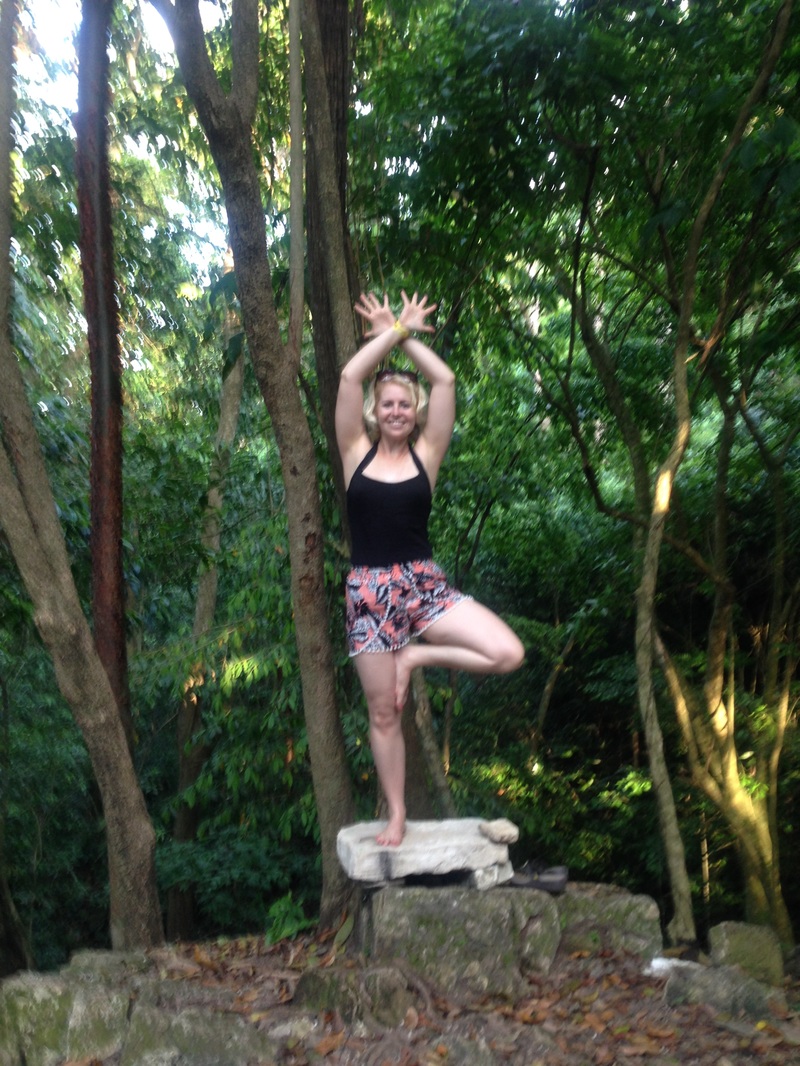

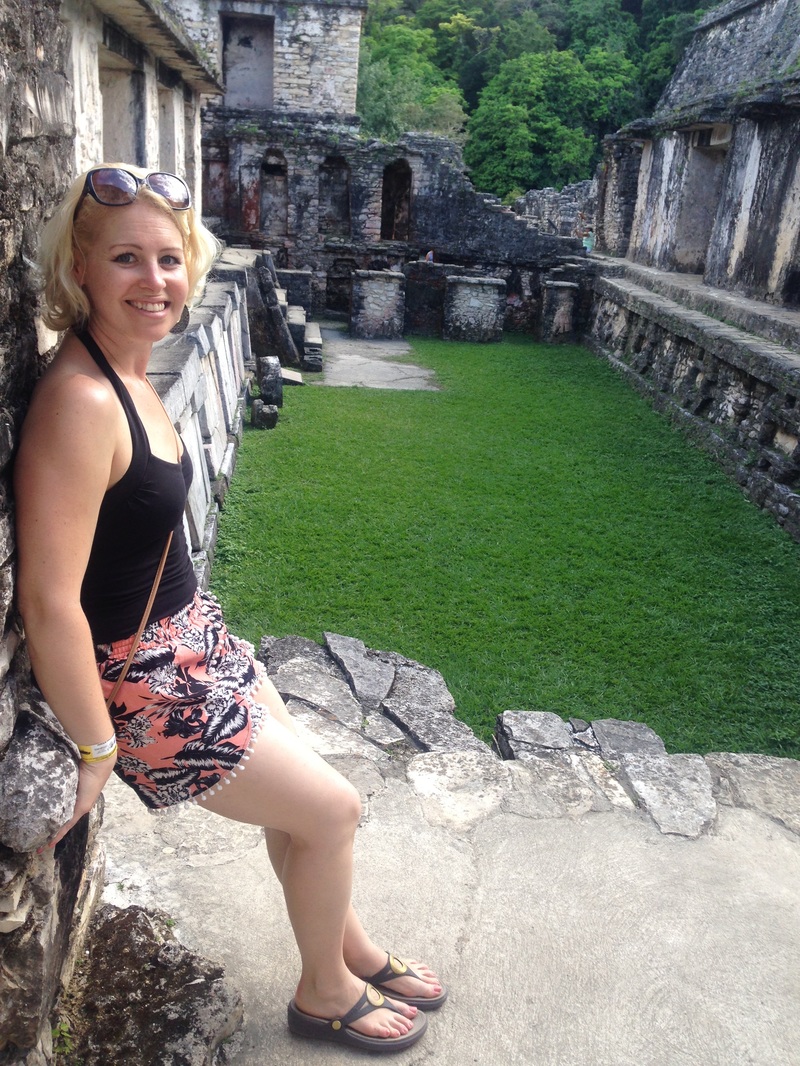






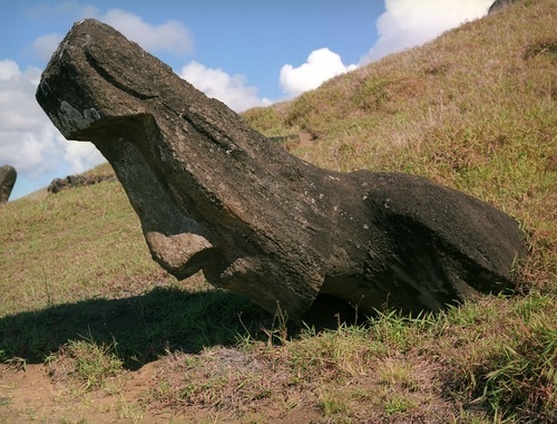









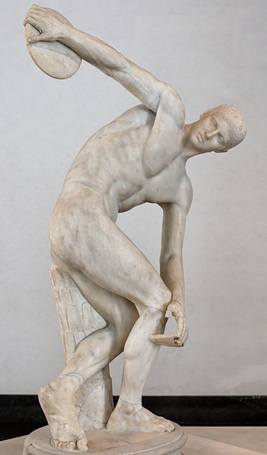


























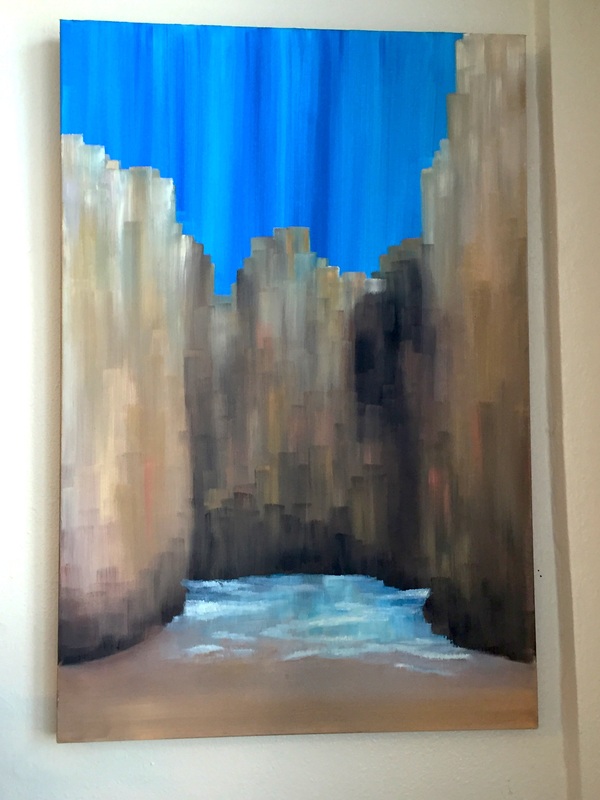

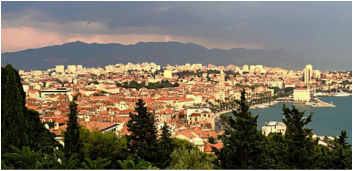





















 RSS Feed
RSS Feed